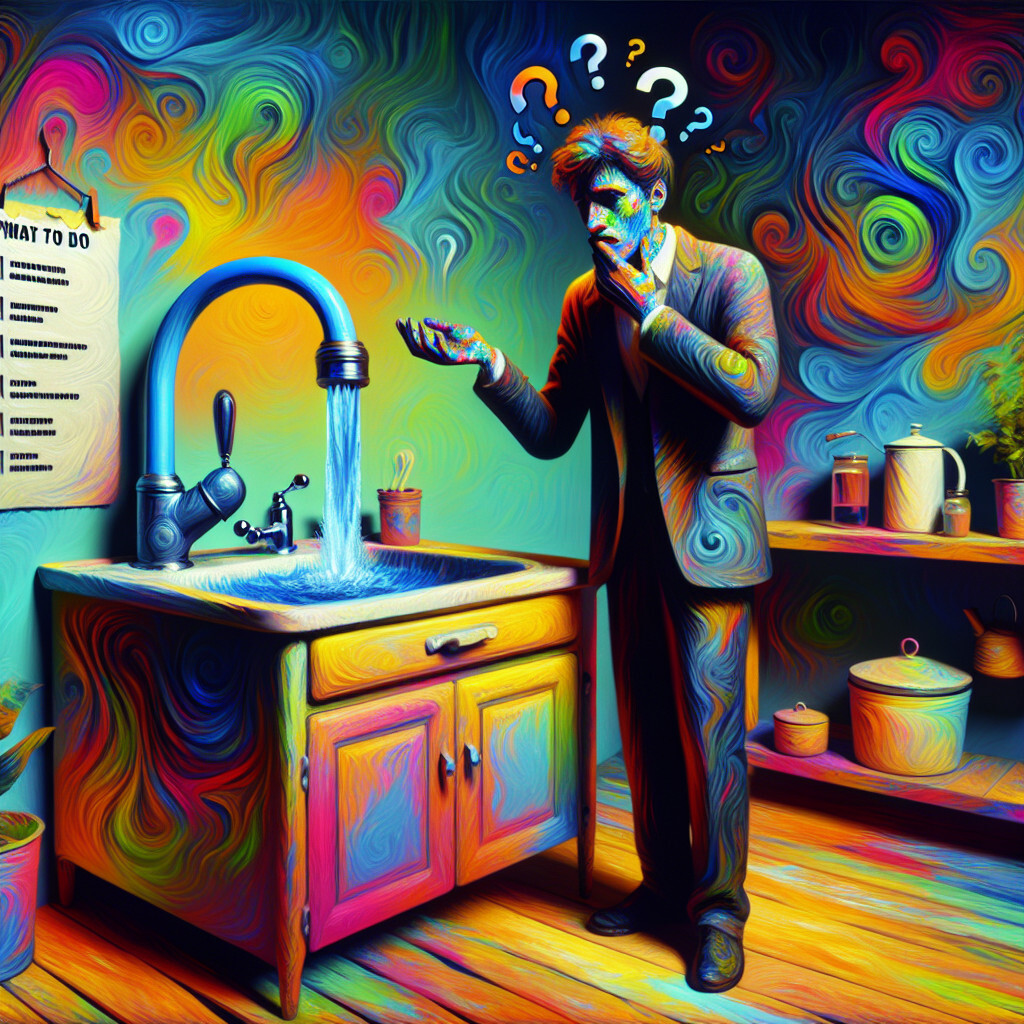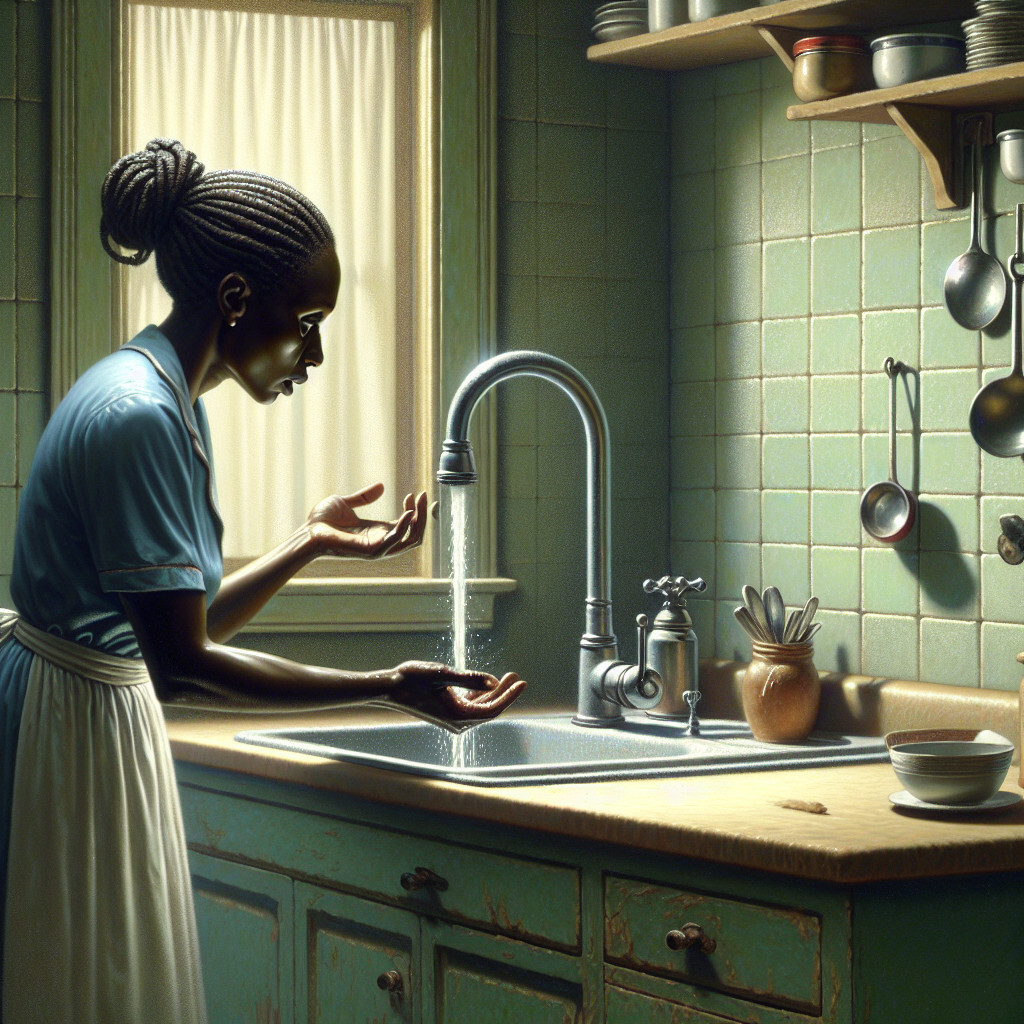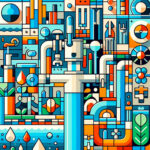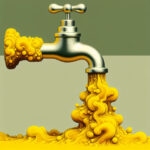-
Table of Contents
“When water stops, it’s time to check the top!”
Introduction

This introduction will guide you through the steps to take if water is not coming from your tap. It will cover initial checks to perform, such as ensuring the main water valve is turned on and checking for possible leaks. It will also provide information on how to identify if the issue is local or widespread, and when to call a professional plumber for assistance. This guide aims to help you troubleshoot and resolve the issue of no water coming from your tap in a systematic and efficient manner.
Troubleshooting Tips: What to Do When Water Stops Flowing from Your Tap
When you turn on your tap and nothing comes out, it can be a cause for concern. This situation can be quite frustrating, especially when you need water for cooking, cleaning, or other household chores. However, before you panic, there are several troubleshooting steps you can take to identify and possibly rectify the problem.
Firstly, it is essential to determine whether the problem is isolated to a single tap or affects the entire house. If only one tap is not working, the issue is likely localized to that specific fixture. The problem could be a blocked aerator, which is the small screen at the end of the tap where the water comes out. Over time, mineral deposits can build up and block the flow of water. To clean it, unscrew the aerator from the tap, remove any debris, and rinse it under running water. If the aerator is severely clogged, soaking it in a vinegar solution can help dissolve the mineral deposits.
On the other hand, if water is not coming from any of the taps in your house, the problem could be more serious. It could be due to a disruption in your water supply. This could be caused by a water main break, routine maintenance, or even a failure to pay your water bill. In such cases, it would be prudent to contact your local water company to ascertain if there are any known issues affecting your area.
Another possible reason for the lack of water could be a problem with your home’s plumbing system. If you live in a cold climate, your pipes may have frozen, preventing water from flowing. If you suspect this is the case, you should immediately call a professional plumber to avoid potential pipe bursts and subsequent water damage.
If you have a well system, the issue could be with the well pump or pressure tank. A malfunctioning pump or a pressure tank that has lost its air charge can prevent water from being delivered to your home. In this case, you would need to call a well specialist to diagnose and fix the problem.
In some instances, the problem could be as simple as a closed water valve. Check the main water valve and other valves in your home to ensure they are fully open. If they are closed or partially closed, opening them should restore the water flow.
While these troubleshooting tips can help you identify the problem, it is always advisable to consult with a professional plumber if you are unsure or if the problem persists. They have the necessary expertise and tools to diagnose and fix a wide range of plumbing issues.
In conclusion, when water stops flowing from your tap, it’s important not to panic. Instead, take a systematic approach to identify the problem. Check if it’s an isolated issue, contact your water company, inspect your home’s plumbing system, and consult with a professional if necessary. By taking these steps, you can quickly restore your water supply and get back to your daily routine.
Understanding and Resolving Issues with Your Tap Water Supply
Water is an essential commodity in every household, and a disruption in its supply can cause significant inconvenience. When you turn on your tap and no water comes out, it can be a cause for concern. Understanding the potential causes and solutions for this issue can help you resolve it quickly and efficiently.
Firstly, it’s important to ascertain whether the problem is isolated to a single tap or affects the entire household. If only one tap is affected, the issue is likely localized and could be due to a blocked faucet or a problem with the plumbing connected to that specific tap. In such cases, you may need to clean or replace the faucet, or call a plumber to inspect and repair the plumbing.
On the other hand, if no water is coming from any of the taps in your home, the problem could be more widespread. It could be due to a disruption in the main water supply, which could be caused by maintenance work, a burst pipe, or other issues with the water infrastructure in your area. In this case, you should contact your local water supply company to inquire about any known issues or disruptions.
Another possible reason for a lack of water could be a problem with your home’s water pressure. Low water pressure can result from various issues, including leaks in your plumbing system, clogged pipes, or problems with the pressure regulator. If you suspect that low water pressure is the issue, it may be necessary to call a professional plumber to diagnose and fix the problem.
If you live in a cold climate, another potential cause for water not coming from your tap could be frozen pipes. When water freezes in pipes, it expands and can block the flow of water. If you suspect your pipes are frozen, you should take immediate action to thaw them and prevent them from bursting, which can cause significant damage. This can be done by applying heat to the affected area using a hairdryer or a heating pad, but in severe cases, it may be necessary to call a professional.
In some cases, the issue could be with the water meter or the main shut-off valve. If these have been turned off accidentally or are malfunctioning, they could be preventing water from reaching your taps. Checking these and ensuring they are in the correct position or functioning properly could resolve the issue.
In conclusion, if water is not coming from your tap, there are several potential causes, ranging from localized issues with a specific tap or faucet to more widespread problems with your home’s plumbing system or the main water supply. Identifying the cause is the first step towards resolving the issue. Depending on the nature of the problem, solutions may include cleaning or replacing faucets, repairing plumbing, contacting your water supply company, adjusting water pressure, thawing frozen pipes, or checking the water meter or main shut-off valve. In many cases, it may be necessary to enlist the help of a professional plumber to ensure the issue is properly diagnosed and fixed.
Steps to Take When Your Tap Runs Dry: A Comprehensive Guide
When you turn on your tap and nothing comes out, it can be a disconcerting experience. This situation can be caused by a variety of factors, ranging from minor issues like a closed valve to more serious problems such as a broken water main. This article provides a comprehensive guide on what to do if water is not coming from your tap.
Firstly, it is essential to ascertain whether the problem is isolated to a single tap or affects the entire property. If only one tap is affected, the issue is likely to be localized and easier to resolve. The problem could be a blocked aerator, which is the small screen at the end of the tap. Over time, mineral deposits can build up and obstruct the flow of water. To rectify this, simply unscrew the aerator, clean it thoroughly, and then screw it back on.
If water is not flowing from multiple taps, the next step is to check if the main water valve is open. The main water valve is typically located near the water meter and should be turned fully counterclockwise to ensure it is open. If the valve was closed and opening it restores the water flow, then the problem is solved. However, if the valve was already open or opening it does not resolve the issue, further investigation is required.
In such cases, it is advisable to reach out to your neighbors to determine if they are experiencing similar problems. If they are, it is likely that there is a problem with the local water supply, such as a broken water main. In this scenario, contact your local water company to report the issue and inquire about the estimated time for the restoration of service.
If your neighbors have not experienced any disruption in their water supply, the problem may lie within your property’s plumbing system. At this point, it would be prudent to call a professional plumber. They have the necessary expertise and tools to diagnose and fix the problem, whether it’s a leak, a blockage, or a problem with the water pressure.
While waiting for the plumber, it is important to conserve any water you have. If you have a water heater or a water storage tank, they can provide a temporary supply. Remember to use this water sparingly for essential tasks like drinking, cooking, and personal hygiene.
In conclusion, when water is not coming from your tap, start by identifying whether the problem is localized or widespread. If it’s a single tap, check the aerator. If multiple taps are affected, ensure the main water valve is open. If the problem persists, consult with your neighbors and potentially contact your local water company. If the issue seems to be unique to your property, enlist the services of a professional plumber. Throughout this process, remember to conserve any available water. By following these steps, you can effectively navigate the inconvenience of a dry tap and ensure the issue is resolved as quickly as possible.
Dealing with Water Supply Issues: How to React When Your Tap Stops Working
Water supply issues can be a significant inconvenience, especially when you turn on your tap and no water comes out. This situation can be quite alarming, but it’s essential to remain calm and take the necessary steps to identify and resolve the problem.
Firstly, it’s crucial to ascertain whether the problem is isolated to a single tap or if it affects the entire household. If only one tap is not working, the issue might be a blocked faucet or a problem with the specific plumbing connected to that tap. In such cases, you may need to clean or replace the faucet or call a plumber to inspect the pipes.
However, if no water is coming from all the taps in your house, it could indicate a more serious issue. It might be a problem with the main water supply, possibly due to a water outage in your area or a significant issue with your home’s plumbing system.
In the event of a water outage, it’s advisable to contact your local water company to report the issue and inquire about the expected duration of the outage. They can provide information about the cause of the problem and when you can expect your water supply to be restored.
If the water company confirms that there is no outage in your area, the problem might be with your home’s plumbing system. In this case, it’s essential to call a professional plumber immediately. They have the necessary expertise and equipment to diagnose and fix the problem.
While waiting for the plumber, it’s advisable to check your water meter. If the meter is still running even though all your taps are off, it could indicate a water leak somewhere in your house. This situation requires immediate attention as it can lead to significant water loss and damage to your property.
In addition to calling a plumber, you should also turn off your home’s main water valve to prevent further water loss and potential damage. The main water valve is usually located near the water meter. Turning it off will stop all water flow into your house until the plumber arrives and fixes the problem.
It’s also important to note that during winter, water pipes can freeze and prevent water from flowing. If you suspect this is the case, you can try to thaw the pipes by applying heat to the affected area using a hairdryer or a heat lamp. However, be careful not to use open flames as they can damage the pipes and potentially cause a fire.
In conclusion, dealing with water supply issues can be stressful, but knowing what to do when water is not coming from your tap can help you manage the situation effectively. Whether it’s a blocked faucet, a water outage, a plumbing issue, or frozen pipes, it’s crucial to identify the problem quickly and take the necessary steps to resolve it. Remember, when in doubt, it’s always best to call a professional plumber to ensure the issue is fixed correctly and safely.
Q&A
1. Question: What should I do first if water is not coming from my tap?
Answer: First, check other taps in your house to determine if the problem is isolated to one tap or affecting your entire house.
2. Question: What if all taps in my house are not working?
Answer: If all taps are not working, it could be a problem with your main water supply. Contact your local water company to report the issue and check if there’s a known outage in your area.
3. Question: What if only one tap is not working?
Answer: If only one tap is not working, the issue might be with the faucet itself. Check for any visible blockages, and if none, you may need to replace or repair the faucet.
4. Question: What can I do if I can’t immediately fix the problem?
Answer: If you can’t immediately fix the problem, consider using bottled water for drinking and cooking. For hygiene purposes, you could also use wet wipes or hand sanitizers.
Conclusion
In conclusion, if water is not coming from the tap, it is advisable to check for any visible issues such as leaks or blockages. If no issues are found, contact a professional plumber or your local water company to investigate and resolve the problem. It’s also important to have an alternative source of water for drinking and sanitation purposes until the issue is resolved.






